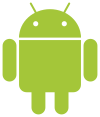
| Nokia Lumia 920 | |
| Manufacturer | Nokia |
|---|---|
| Slogan | "The world’s most innovative smartphone"[1] |
| Series | Lumia |
| Compatible networks | GSM/GPRS/EDGE 850/900/1800/1900 HSPA 850/900/1700/1900/2100 LTE 700/1700/2100 (except non-LTE model)[2][3] TD-SCDMA (920T) |
| First released | November 2, 2012 |
| Predecessor | Nokia Lumia 900 |
| Related | Nokia Lumia 900, Nokia Lumia 820 |
| Type | Smartphone |
| Form factor | Bar |
| Dimensions | 130.3 mm (5.13 in) H 70.8 mm (2.79 in) W 10.7 mm (0.42 in) D |
| Weight | 185 g (6.5 oz) |
| Operating system | Windows Phone 8 |
| SoC | Qualcomm Snapdragon S4 MSM8960 |
| CPU | 1.5 GHz dual-core Qualcomm Krait |
| GPU | Qualcomm Adreno 225 (920) Qualcomm Adreno 305 (920T) |
| Memory | 1 GB RAM |
| Storage | 32 GB internal flash |
| Removable storage | No memory card slot |
| Battery | Rechargeable BP-4GW 2000 mAh Lithium polymer battery,[4] Qi inductive charging |
| Data inputs | Multi-touch capacitive touchscreen, proximity sensor, ambient light sensor, gyroscope,magnetometer, 3-axis accelerometer |
| Display | 114 mm (4.5″) IPS LCD WXGA capacitive touchscreen with high sensitivity touch, 1280 × 768 pixels at 332 ppi, 16.7m-color, Refresh rate 60 Hz, Polarization filter, Curved glass, RGB Stripe, Luminance 600 nits, Aspect ratio 15:9, Gorilla Glass 2 |
| Rear camera | 8.7 megapixel PureView with Optical image stabilization, 3264 × 2448 pixels, f/2.0, Short Pulse High Power Dual- LED flash, autofocus, Carl Zeiss optics, 1080p video capture |
| Front camera | 1.3 megapixel, 1280 × 1024 pixels, 720pvideo capture |
| Connectivity | GPS with A-GPS & GLONASS |
| Other | Talk time: Up to 10 hours (9 hours for AT&T version)[6] Standby time: Up to 400 hours (approx. 16.7 days) (320 hours for AT&T version approx. 13.3 days) |
| Website | Nokia Lumia 920 |








